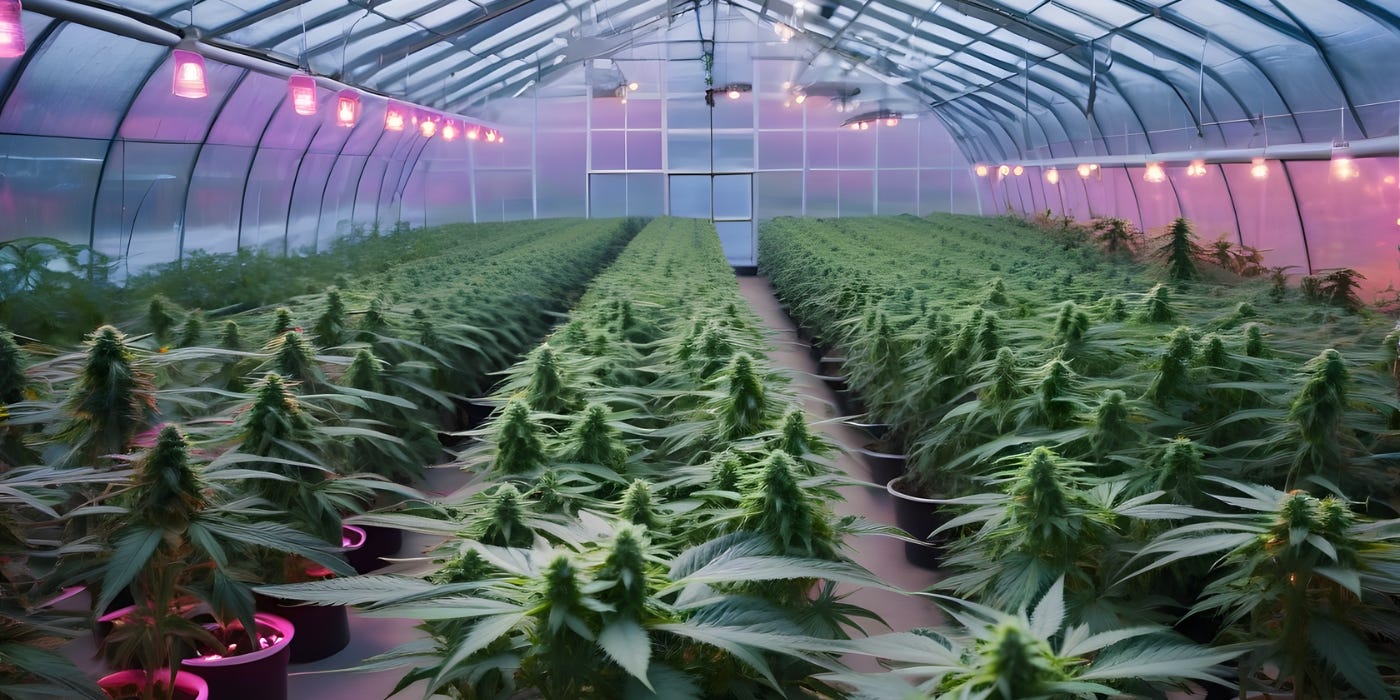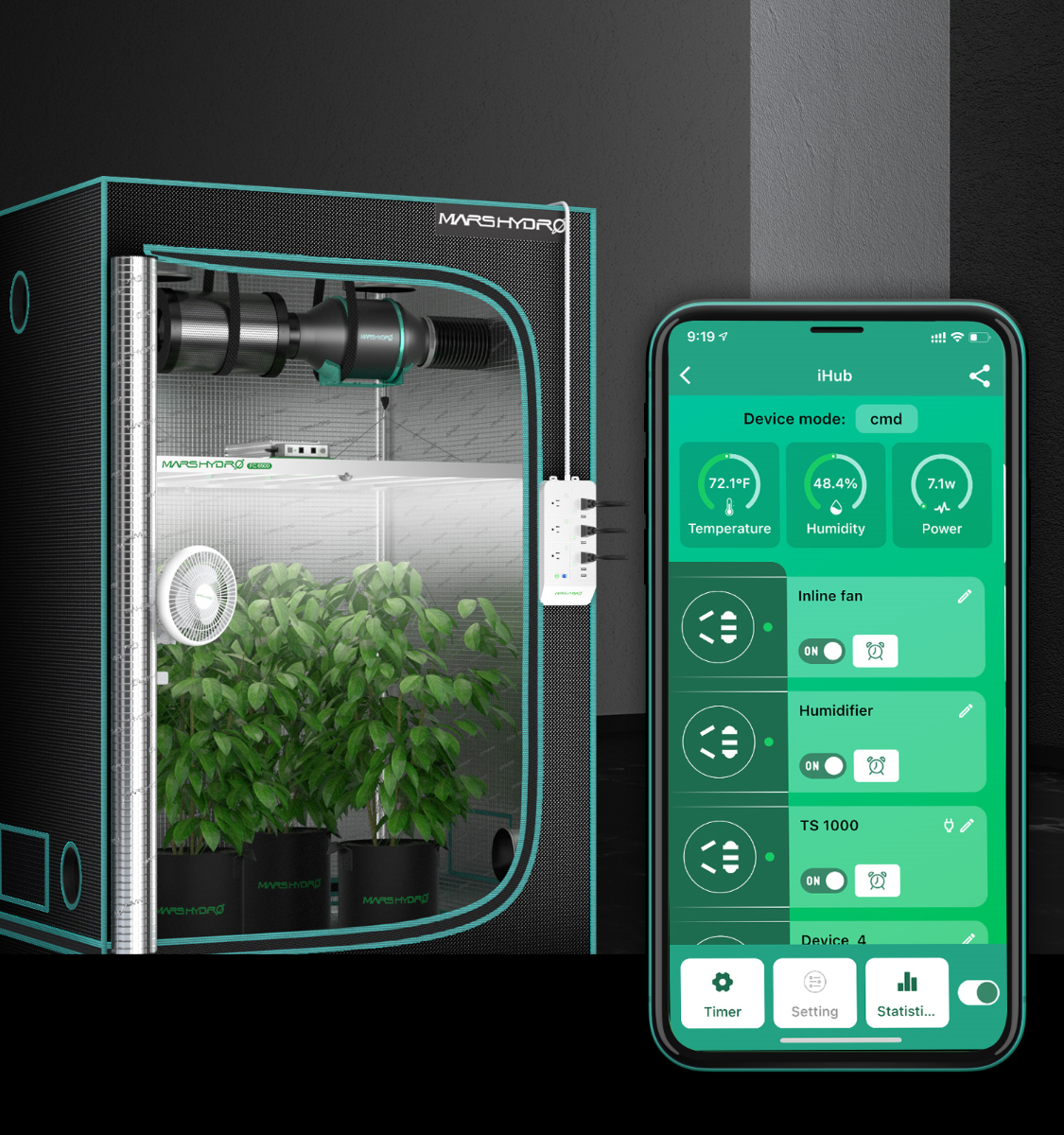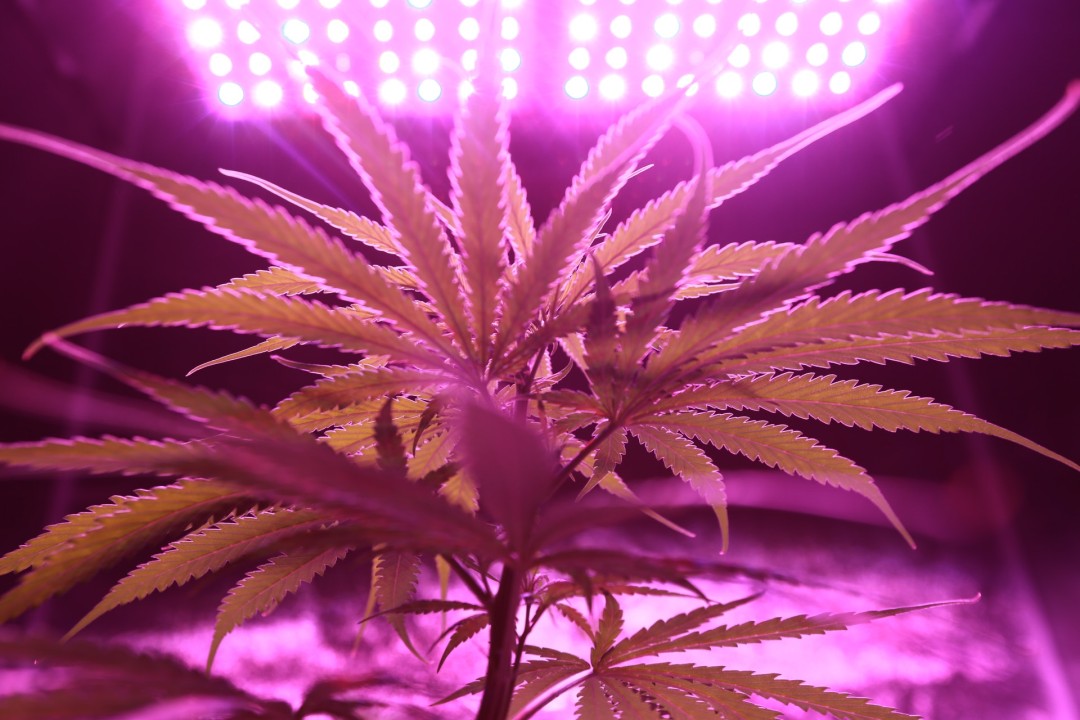In an industry that's evolving at a breakneck pace, cannabis cultivators are constantly seeking new ways to push the boundaries of what's possible.
With demand for high-quality cannabis products skyrocketing, and competition becoming increasingly fierce, growers are turning to cutting-edge cultivation techniques to gain a competitive edge. From advanced lighting strategies to innovative hydroponic setups and automated environmental control systems, the latest growing methods are revolutionizing the game, helping cultivators maximize yields, improve product quality, and streamline operations.

IMAGE: Medium
A Brief History: From Traditional to Cutting-Edge
Cannabis cultivation has come a long way from its humble beginnings in backyard gardens and clandestine grow rooms. Traditional growing methods, such as soil-based cultivation and basic lighting setups like high-pressure sodium (HPS) and metal halide (MH) lamps, have served growers well for decades. However, as the industry continues to mature and consumer expectations rise, the need for more advanced, efficient, and sustainable cultivation practices has become paramount.
The driving forces behind the adoption of cutting-edge techniques are multifaceted. Increasing demand for cannabis products, coupled with intensifying competition, has pushed growers to seek out methods that can deliver higher yields and better quality. Additionally, the growing emphasis on sustainability and environmental responsibility has prompted cultivators to explore more resource-efficient and eco-friendly growing practices.
Advanced Lighting Strategies: Illuminating the Path to Success
Proper lighting is crucial for successful cannabis cultivation, as it plays a vital role in plant growth, development, and overall yield and quality. While traditional lighting methods like HPS and MH have been industry staples for years, cutting-edge lighting technologies are quickly gaining traction, offering growers unprecedented control and precision.
LED Lighting Systems
At the forefront of advanced lighting strategies are light-emitting diode (LED) systems. LED grow lights have revolutionized the industry, offering unparalleled energy efficiency, longer lifespan, and the ability to customize the light spectrum to meet the specific needs of different growth stages. LED lights not only reduce energy consumption and cooling costs but also allow for more precise control over factors like light intensity and wavelengths, enabling cultivators to optimize plant growth and potency.
Plasma and Induction Lighting
While LED technology has taken the industry by storm, other cutting-edge lighting solutions are also making waves. Plasma lighting, which utilizes electrically charged gases to produce high-intensity light, is gaining popularity for its ability to mimic natural sunlight more closely than traditional grow lights. Similarly, induction lighting, which uses electromagnetic fields to excite gas-filled tubes, offers exceptional energy efficiency and a long lifespan, making it an attractive option for large-scale commercial operations.
Optimizing Lighting Setups
Regardless of the specific lighting technology employed, experts emphasize the importance of optimizing lighting setups for different growth stages. During the vegetative stage, plants benefit from a higher ratio of blue light to promote healthy leaf and stem growth. In the flowering stage, however, a higher ratio of red light is crucial for maximizing bud development and potency. By carefully calibrating light intensity, wavelengths, and photoperiods, cultivators can unlock the full potential of their plants and achieve consistently high-quality yields.
IMAGE: LinkedIn
Innovative Hydroponic Setups: Mastering Water and Nutrients
While traditional soil-based cultivation methods have their merits, many modern growers are embracing the cutting-edge world of hydroponics. By growing plants in nutrient-rich water solutions without soil, hydroponic systems offer numerous advantages, including faster growth rates, more efficient nutrient uptake, and reduced water usage.
Aeroponics: Roots in the Air
One of the most innovative hydroponic techniques is aeroponics, where plant roots are suspended in the air and periodically misted with a nutrient-rich solution. Aeroponics allows for exceptional root development and nutrient absorption, resulting in faster growth and higher yields. This method also minimizes water usage and reduces the risk of soil-borne pests and diseases, making it an attractive option for eco-conscious cultivators.
Nutrient Film Technique (NFT) and Deep Water Culture (DWC)
Another cutting-edge hydroponic approach is the nutrient film technique (NFT), where a shallow stream of nutrient-rich water constantly flows over the plant roots. This method is highly efficient and easy to automate, making it suitable for large-scale commercial operations. Deep water culture (DWC), on the other hand, involves suspending the plant roots in a reservoir of aerated nutrient solution, offering a simple and low-maintenance hydroponic setup.
Drip Irrigation Systems
For growers seeking a more traditional approach with the benefits of hydroponics, drip irrigation systems offer a happy medium. These systems deliver a precise and controlled flow of nutrient solution directly to the root zone, eliminating the need for manual watering and reducing water waste.
Regardless of the specific hydroponic setup, expert growers emphasize the importance of closely monitoring and adjusting nutrient levels and water quality. Maintaining the perfect balance of nutrients and pH levels is crucial for maximizing plant health and yield. By leveraging advanced monitoring and control systems, cultivators can ensure their hydroponic setups operate at peak efficiency.

IMAGE: Current Culture H2O
Automation and Smart Monitoring: Putting Technology to Work
In the world of cutting-edge cannabis cultivation, precision is key. Even slight deviations in environmental factors like temperature, humidity, and CO2 levels can have a significant impact on plant growth and yield. While traditional manual monitoring and adjustment methods have served growers well in the past, the advent of advanced automation and smart monitoring technologies is revolutionizing the industry.
Environmental Sensors and Climate Control Systems
At the heart of many cutting-edge grow operations are sophisticated environmental sensors that continuously monitor key parameters like temperature, humidity, CO2 levels, and nutrient levels. These sensors feed real-time data into automated climate control systems, which make precise adjustments to maintain the optimal growing environment. By eliminating the need for manual monitoring and adjustments, these systems ensure consistent, stable conditions that promote healthy plant growth and maximize yields.
Remote Monitoring and Control
Taking automation a step further, cutting-edge cultivators are leveraging remote monitoring and control platforms that allow them to track and adjust grow room conditions from anywhere in the world. This level of remote control not only improves efficiency but also enables cultivators to respond quickly to any issues or deviations, minimizing the risk of crop losses or quality issues.
Data-Driven Decision Making
Perhaps one of the most significant advantages of advanced automation and monitoring technologies is the wealth of data they provide. By analyzing data on environmental conditions, nutrient levels, and plant growth patterns, cultivators can make informed, data-driven decisions to optimize their operations continuously. This data-driven approach not only helps growers fine-tune their current practices but also informs future cultivation strategies, driving continuous improvement and innovation.

IMAGE: Mars Hydro
Advanced Genetics and Breeding: Unlocking the Potential
While cutting-edge growing techniques play a crucial role in maximizing yields and quality, the foundation of any successful cannabis cultivation operation lies in its genetics. Recognizing the importance of genetics, industry leaders are embracing advanced breeding techniques and genetic technologies to develop strains with desirable traits like high potency, disease resistance, and improved growth characteristics.
Marker-Assisted Selection (MAS) and Genomic Selection
Traditional breeding methods, which rely on visual inspection and phenotypic selection, are being augmented by cutting-edge techniques like marker-assisted selection (MAS) and genomic selection. MAS allows us to identify and select for specific genetic markers associated with desirable traits, significantly accelerating the breeding process. Genomic selection takes this a step further by analyzing the entire genome to predict the performance of different breeding lines, enabling more precise and efficient strain development.
Gene Editing: Precision and Potential
While still in its early stages in the cannabis industry, gene editing technologies like CRISPR hold immense potential for creating strains with tailored genetic profiles. By precisely editing specific genes, we can introduce or enhance desirable traits like increased potency, improved stress tolerance, or novel cannabinoid and terpene profiles.
Responsible Innovation
As with any cutting-edge technology, the use of advanced genetics and breeding techniques in cannabis cultivation has sparked debates around ethics, sustainability, and potential risks. Experts stress the importance of responsible innovation, prioritizing consumer safety, environmental stewardship, and transparency in the development and application of these technologies.

IMAGE: Weedmaps
Overcoming Challenges and Embracing the Future
While cutting-edge cultivation techniques offer numerous benefits, their implementation is not without challenges. The initial investment costs associated with advanced lighting systems, hydroponic setups, and automation technologies can be substantial, potentially creating barriers for smaller operations or those with limited resources.
Additionally, the rapidly evolving regulatory landscape surrounding cannabis cultivation presents its own set of challenges. Growers must stay informed about local, state, and federal laws and regulations to ensure compliance and avoid potential legal issues.
Environmental considerations are also a key factor, as some advanced techniques may have a larger environmental footprint than traditional methods. Cultivators must carefully evaluate the sustainability and eco-friendliness of their practices, seeking out energy-efficient and resource-conscious solutions whenever possible.
Despite these challenges, the cannabis industry's brightest minds remain optimistic about the future of cutting-edge cultivation techniques. As technology continues to advance and our understanding of cannabis genetics and plant biology deepens, we can expect even more innovative and efficient growing methods to emerge]. The key is to embrace these advancements while maintaining a strong commitment to responsible cultivation practices that prioritize consumer safety, environmental stewardship, and ethical standards.
FAQs
- What are the initial investment costs for implementing cutting-edge cultivation techniques? The initial investment costs can vary significantly depending on the specific techniques and technologies adopted. Advanced lighting systems, hydroponic setups, and automation equipment can range from a few thousand dollars for smaller operations to hundreds of thousands of dollars for large-scale commercial facilities.
- How difficult is it to transition from traditional to advanced growing methods? The difficulty of transitioning to cutting-edge cultivation techniques depends on factors like the grower's existing knowledge and infrastructure, as well as the specific methods being adopted. Proper training, careful planning, and a gradual transition process can help mitigate potential challenges and ensure a smooth integration of new technologies and practices.
- Are there any specific legal or regulatory considerations to be aware of? Yes, the legal and regulatory landscape surrounding cannabis cultivation varies greatly by region and is constantly evolving. Growers must stay informed about local, state, and federal laws and regulations to ensure compliance and avoid potential legal issues when implementing cutting-edge techniques.
- How do cutting-edge techniques impact the environmental footprint of cannabis cultivation? The environmental impact of cutting-edge cultivation techniques can vary. While some methods, like LED lighting and advanced hydroponic systems, can reduce energy and water consumption, others may have a larger environmental footprint than traditional practices. It's crucial for cultivators to prioritize sustainability and seek out eco-friendly solutions whenever possible.
- What are the potential risks or downsides of using advanced genetic techniques? While advanced genetic techniques like gene editing offer tremendous potential for strain development, they also raise ethical and safety concerns. Improper use or lack of proper oversight could lead to unintended consequences or the creation of potentially harmful strains. Responsible and transparent use of these technologies, adhering to all relevant regulations and guidelines, is essential.
By embracing cutting-edge cannabis cultivation techniques, growers can unlock new levels of efficiency, consistency, and quality in their operations. From advanced lighting strategies and innovative hydroponic setups to automation and precision genetics, these cutting-edge methods are revolutionizing the industry and paving the way for a more sustainable, productive, and consumer-focused future for cannabis cultivation.

